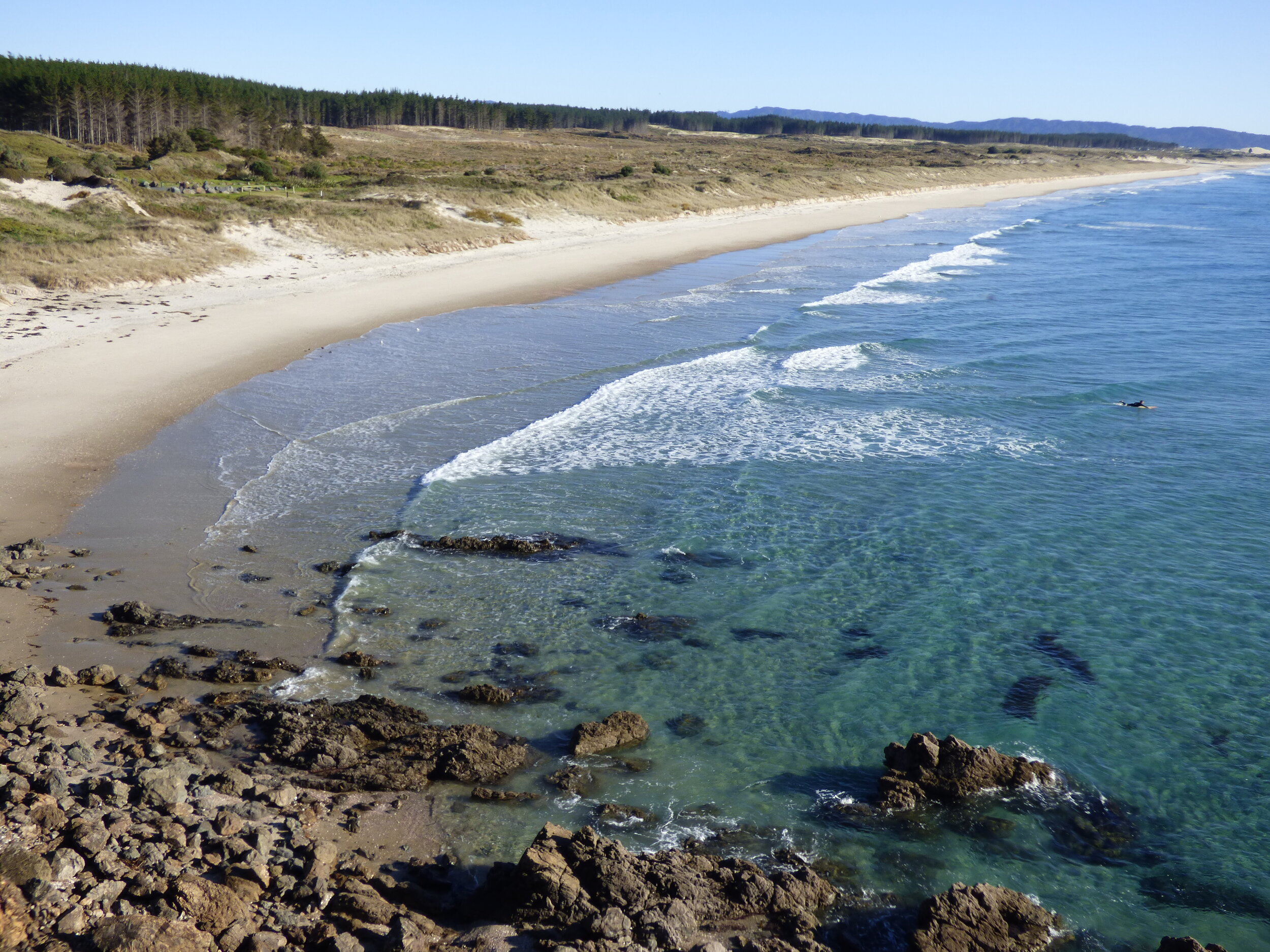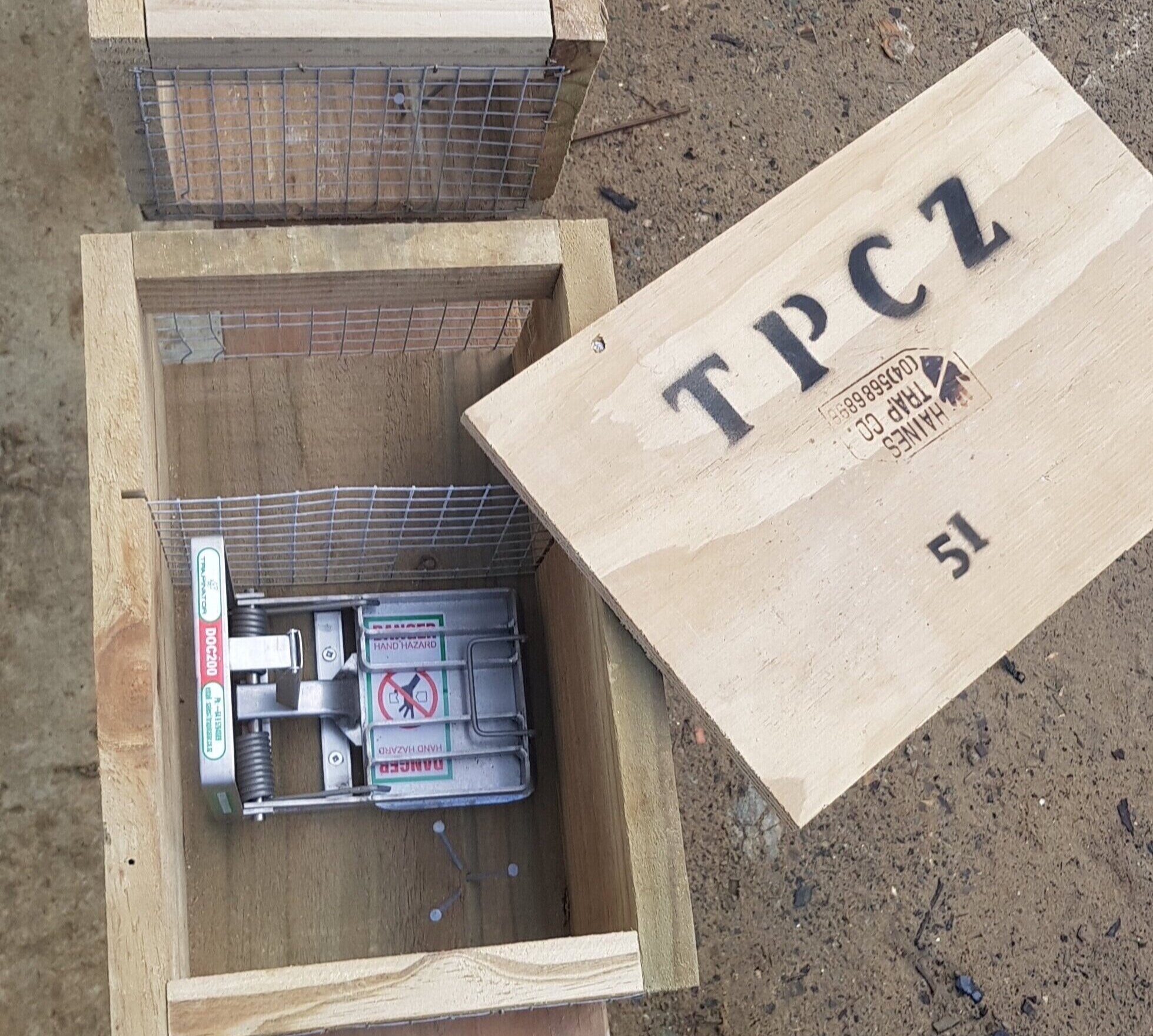
The Conservation Coast project aims to conserve and enhance the ecology and threatened species of Mangawhai, Te Ārai, Tomarata and Pākiri by managing invasive mammalian predators to very low densities along this coast.
Whats the plan?
The Conservation Coast seeks to enhance and connect existing areas of predator control from Mangawhai to Pākiri.
The plan is to create landscape scale trap networks capable of reducing predators reaching ecologically sensitive areas, whilst allowing conservation benefits and biodiversity to expand throughout the wider community.
This vision for integrated predator control covers almost 5500ha, and is made up of four existing and three new predator control zones.
We hope to work with public and private landowners to create new control zones, by providing traps, resources and expertise to control invasive predators.
How are predators managed?
We are using a ‘mainland island’ approach to predator control. This involves the sustained use of traps to reduce the abundance of pests, effectively creating a safe island of habitat for our native species to flourish.
Partnering with private landowners and iwi we will target the wide ranging mustelid predators (stoats, ferrets and weasels).
The trapping techniques used will also capture rats and hedgehogs, helping to reduce their abundance and impacts on biodiversity.
Whats involved?
Equipment provision
Support from Auckland Council means that traps will be provided to participating landowners free of charge.
Trapping frequency
Traps are checked once per month over winter months (March to July inclusive) and once every two weeks over summer months (August to February inclusive). The increased trapping frequency over August to February is to target mustelid breeding periods, and covers the breeding season for native birds.
Who maintains the traps
Preferably, land owners/occupiers will check and reset traps on their property and record their catch data via Trap.NZ.
Alternatively, field staff or other keen participants can maintain the traps on behalf of landowners if this is preferred.
Recording catch data on Trap.nz
Participants can record the pests they catch via Trap.NZ.
Trap.NZ records community catch data, allowing participants to see where pests are caught throughout the project area.
This information is crucial for measuring the success of ongoing pest control.
Traps
The traps used are tried and proven, NAWAC approved DOC series traps;
- DOC 200s for stoats and weasels, and
- DOC 250s for ferrets.
Every trap is enclosed in a specially designed box for safety and to exclude non target animals.
The Conservation Coast predator control zones
DOC200 Traps
Heat map produced via Trap.NZ showing predator catch.
Traps, training and support are provided to landowners within the project zone free of charge.
Already trapping? We would love to bring together and support the efforts of landowners and community groups
already undertaking predator control within the project area.
Image courtesy of Ngā Manu Images.
Why manage invasive predators?
It is estimated that mammalian pests kill 25 million native birds alone per year in New Zealand!
The introduction of mammalian predators to New Zealand has resulted in the extinction and continued decline of many of our unique native species, which are poorly adapted to cope with these exceptional predators. Mustelids are among the key culprits responsible for this loss, significantly impacting our native birds, lizards and invertebrates.







